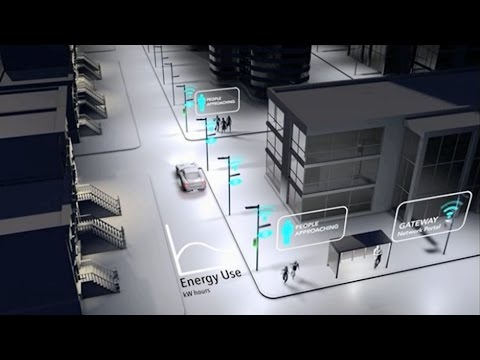Connected Lighting Systems

The replacement of today’s lighting infrastructure with LED products offers the potential for future connected lighting systems (CLS) that could become a data-collection platform that enables greater energy savings in buildings and cities. Such connected lighting systems can not only drastically improve the energy performance of lighting and other building systems, but also enable a wide array of services, benefits, and revenue streams that would enhance the value of lighting systems.
As SSL technology matures, maximizing the energy savings from connected SSL systems will become increasingly dependent on successful integration into the built environment. That’s why the DOE SSL Program is working closely with industry to identify and collaboratively address the technology development needs of CLS. In 2015, DOE launched a Connected Lighting Systems Initiative, which works closely with industry and targets six focus areas:
1. Energy reporting: Data-driven energy management can significantly reduce energy consumption, but effective test methods are needed to characterize measurement accuracy.
2. Interoperability: System performance is dependent on the ability of devices to work together,
and common platforms and protocols are needed to enable the exchange of usable data between lighting systems, other systems, the internet, and cloud services.
3. System configuration complexity: Systems that are overly complicated and time-consuming to configure have historically delivered less than ideal performance.
4. Cybersecurity: Increased connectivity introduces cybersecurity risks that are new to the
lighting industry and that must be addressed if next-level energy savings are to be fully realized.
5. Key new features: Emerging CLS features (e.g., resource and process optimization, health and
productivity gains, new revenue streams) may offer benefits with value that matches or exceeds those derived from improved lighting and energy performance.
6. Stakeholder collaboration: Broad-based collaboration among the lighting, semiconductor, computing, and information technologies (IT) industries is essential to realizing the full potential of CLS.
CONNECTED LIGHTING TEST BED
Central to DOE efforts is the development of a connected lighting test bed (CLTB) designed and operated by Pacific Northwest National Laboratory. The results of technical feasibility investigations in the CLTB will increase visibility and transparency on what does and does not work, and create tight information feedback loops to inform technology developers of needed improvements related to energy reporting, interoperability, configuration complexity, and key new features.